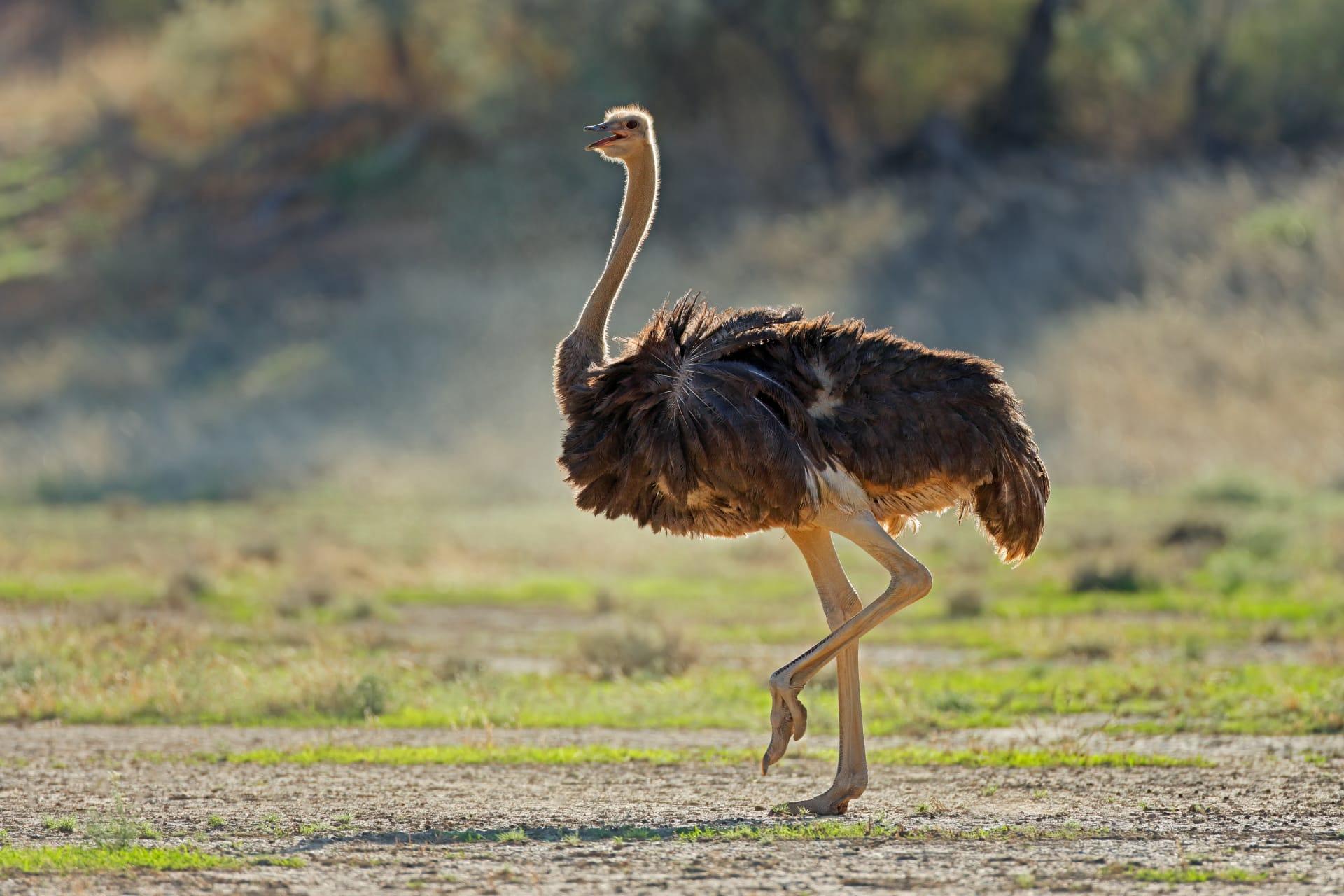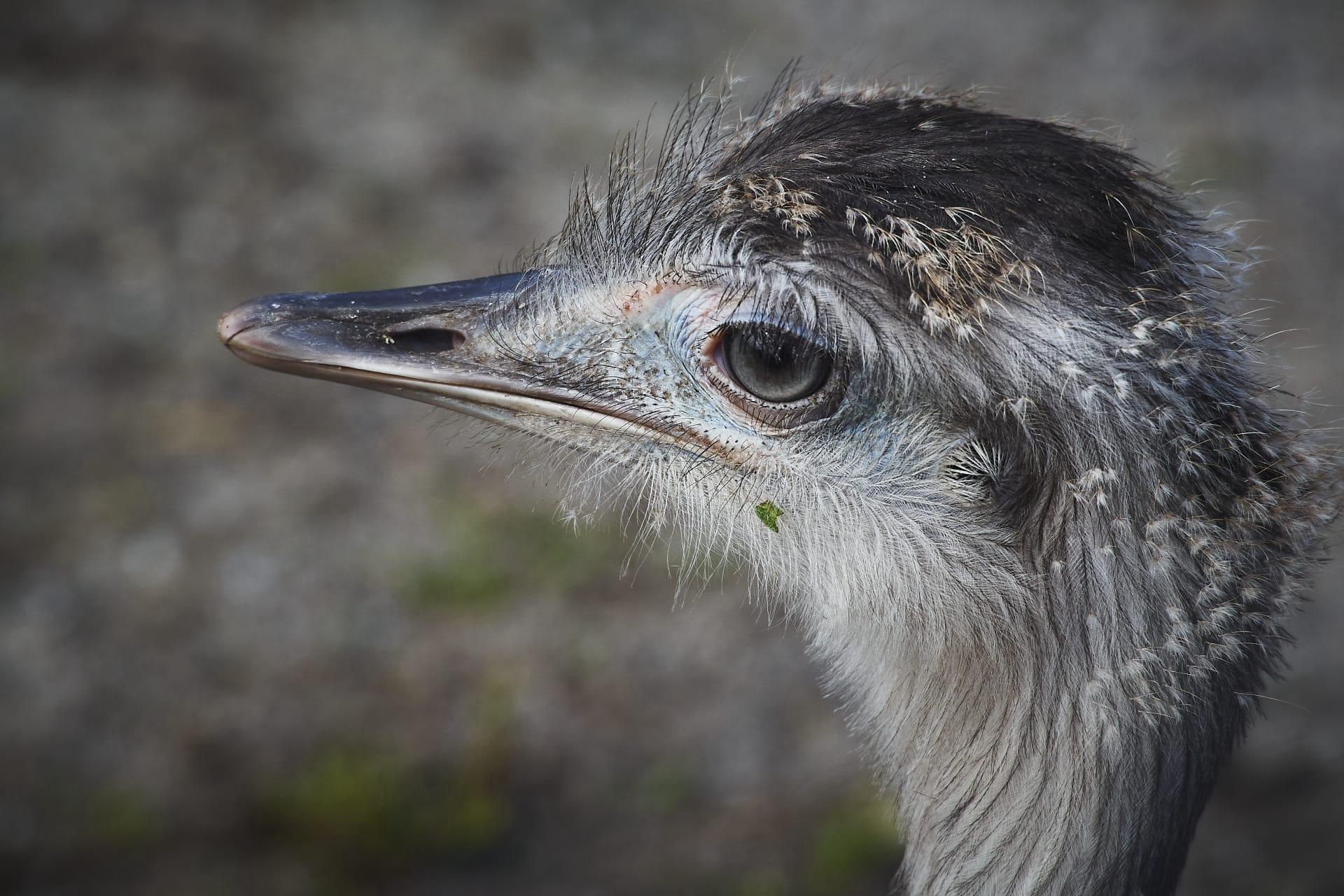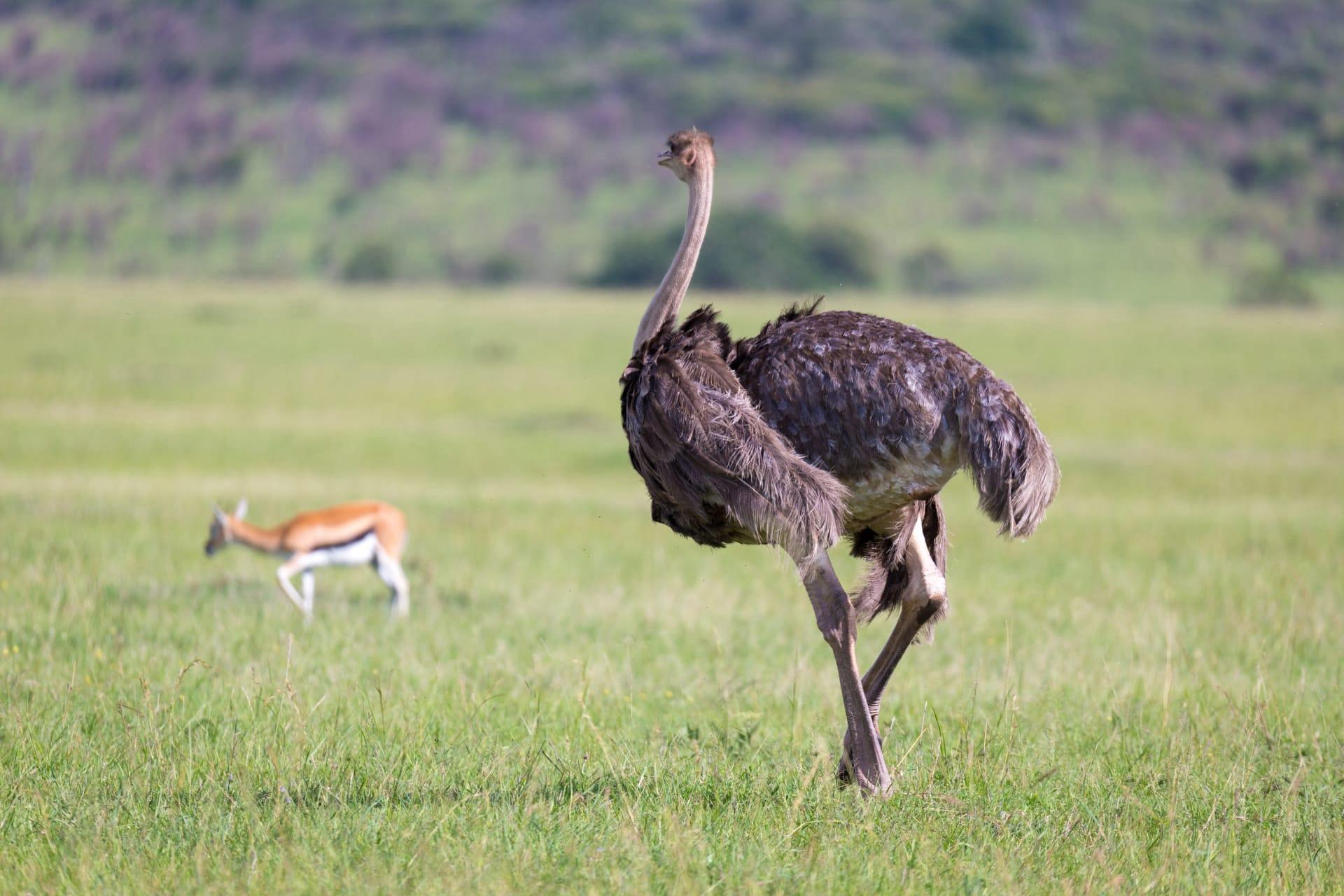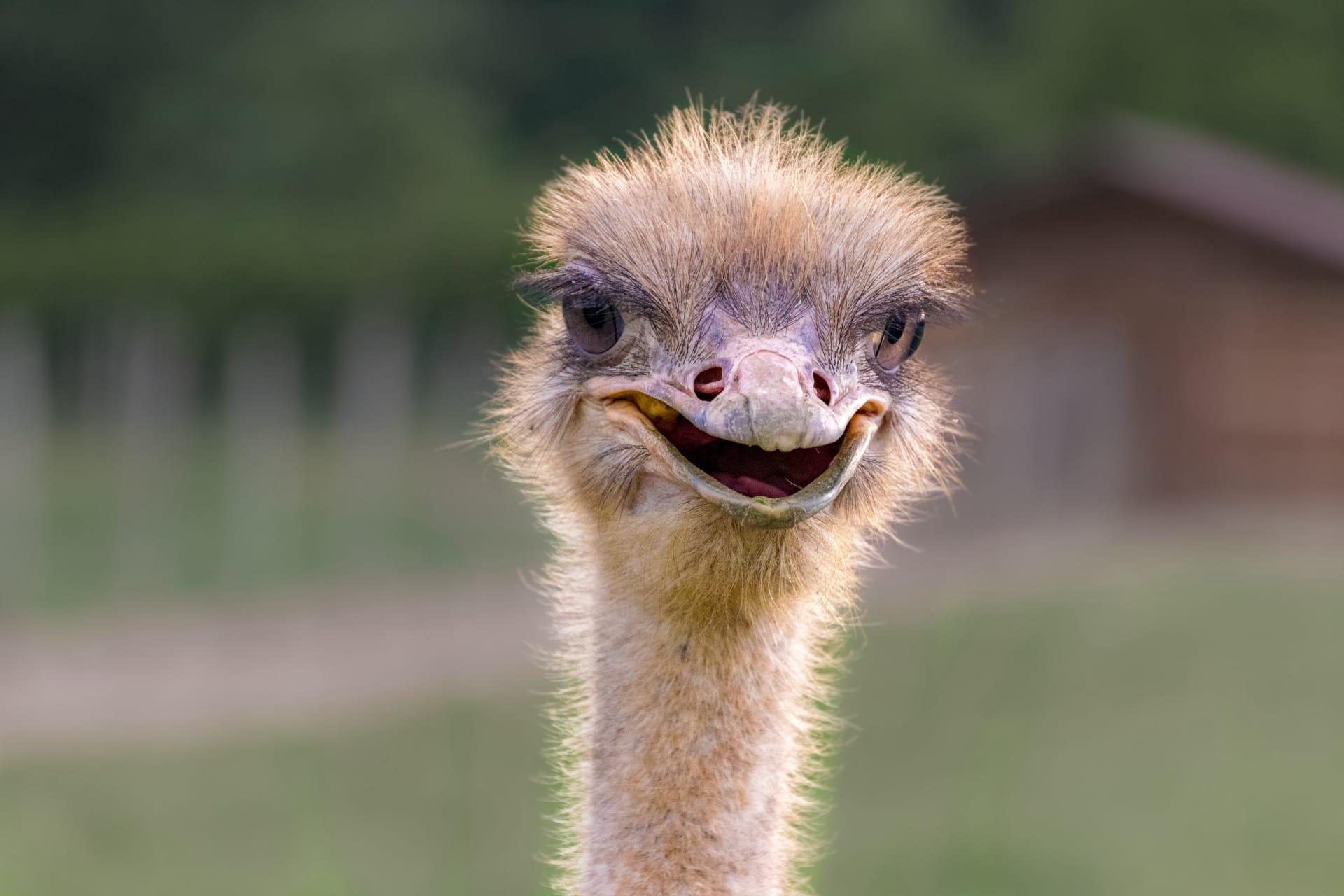Ostrich Characteristics
- Home /
- Mini Encyclopedia /
- Animal /
- Ostrich Characteristics
1
Ostriches, the world's largest birds, are truly a marvel of nature. Adult ostriches can tower up to 9 feet tall and weigh as much as 340 pounds, making them the heftiest birds on the planet. Despite their size, they are fleet-footed, capable of reaching speeds up to 45 miles per hour. Their lifespan is equally impressive, with wild ostriches living up to 30-40 years, and some in captivity even reaching 50 years. One of the most remarkable aspects of an ostrich is its eyes. These are the largest eyes of any land vertebrate, measuring almost 2 inches in diameter. This gives them a significant advantage in spotting potential predators from a great distance.
Speaking of eyes, the ostrich's eyes are its most exceptional organ. Larger than their brain, these eyes are a masterpiece of evolutionary design. Each eye is encircled by long, lush eyelashes that reduce glare and protect them from the harsh desert environment. Their eyesight is incredibly acute, enabling them to spot predators like lions from miles away. This visual acuity is crucial for their survival in open landscapes like savannas and deserts, where hiding is not an option. The positioning of their eyes on the sides of their heads provides a wide field of view, helping them to be constantly vigilant.

2
Question: Do ostriches really bury their heads in the sand?
Answer: Contrary to popular belief, ostriches do not bury their heads in the sand when threatened. This myth likely arose from observing ostriches eating or picking at the ground. When an ostrich feels threatened, it either runs away or lies flat on the ground. Their plumage blends well with sandy soil, which might give an impression of 'burying' their head. But in reality, ostriches are quite vigilant and use their excellent vision and speed to evade predators.

3
Ostriches are renowned for their running abilities. Their long, powerful legs are not only built for speed but also for endurance, allowing them to jog steadily at about 30 miles per hour for long distances. The two-toed structure of their feet, with a large main toe and a smaller secondary one, aids in efficient, high-speed running. Additionally, their legs can be powerful weapons, capable of delivering a forceful kick to predators.
In terms of diet, ostriches are omnivores. They primarily feed on plant matter like seeds, shrubs, and grasses, but they don't shy away from insects, lizards, or other small animals when available. An interesting aspect of their feeding behavior is their consumption of pebbles and small stones. These help in grinding up the food in their gizzard, a specialized part of their stomach designed for food processing.

4
Ostriches are native to diverse environments across Africa, ranging from arid deserts to savannas. They are well-adapted to these harsh climates, requiring minimal water as they can extract most of their needs from the plants they consume. Their body is designed to withstand the extreme temperatures of their habitat, with feathers that insulate them from both the intense heat of the day and the cold of the night.
The breeding behavior of ostriches is quite fascinating. They are polygamous, with a dominant male mating with multiple females. The female lays her eggs in a communal nest, a simple pit scraped in the ground by the male. These nests can hold as many as 60 eggs, although 20 is more typical. The dominant male and the main female take turns incubating the eggs, which is vital for protecting them from predators and extreme temperatures.

5
Book: "The Ostrich: Biology, Production and Health" by D. C. Deeming. This comprehensive book, published in 1999, explores the biology and management of ostriches. Deeming, a renowned expert in the field, dives into topics ranging from the physiological and behavioral aspects of these birds to their health and economic importance. The book is a treasure trove of information for anyone interested in the science and farming of ostriches.
Book: "Ostriches" by Edgar Williams. In this engaging 2001 publication, Williams provides an in-depth look into the world of ostriches. Covering their evolutionary history, biology, and the rise of ostrich farming, the book offers a captivating glimpse into the life and times of these fascinating creatures. Williams' narrative style makes complex scientific concepts accessible to a broad audience, making it an excellent read for both enthusiasts and experts.